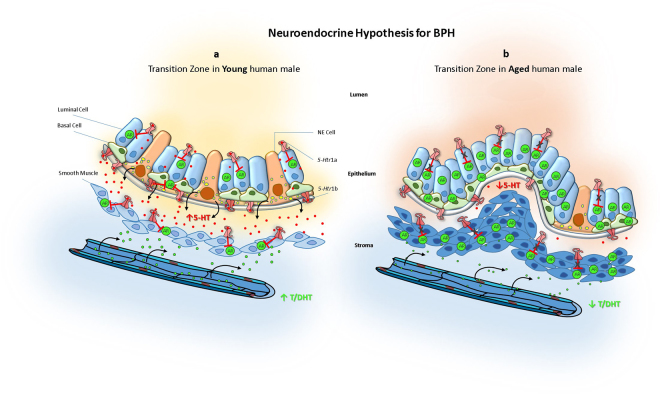Figure 7.
Neuroendocrine hypothesis for etiopathogenesis of benign prostatic hyperplasia. (a) In young human male, prostate transition zone is enriched with 5-HT producing neuroendocrine cells. Serotonin is secreted to the epithelium-stroma interface and through activation of 5-Htr1a and 5-Htr1b, both in epithelium and stroma, the expression of AR is decreased. Yet, more testosterone is delivery to prostate, down-regulated AR limits benign prostate growth. (b) In aged human male, transition zone loses 5-HT producing neuroendocrine cells causing a depletion in local 5-HT. As a consequence 5-Htr1a and 5-Htr1b release their inhibition over AR expression. Although with aging the delivery of testosterone to the prostate is decreased the up-regulation of AR induces the development of BPH. 5-HT, serotonin; AR, androgen receptor; DHT, Dihydrotestosterone; NE, neuroendocrine; T, testosterone.

